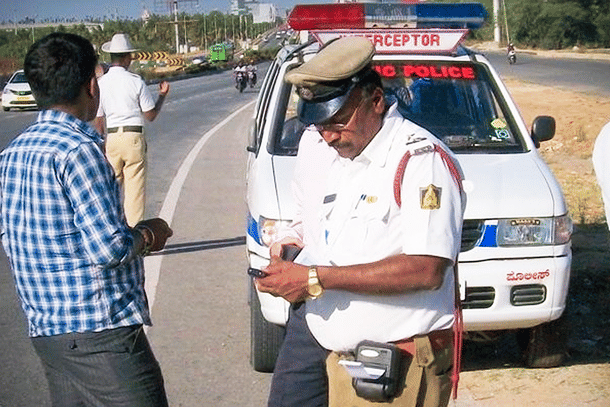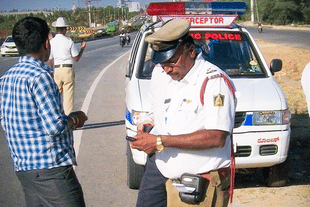News Brief
291 Per Cent Increase In Traffic Challans After Implementation Of The Motor Vehicles (Amendment) Act, 2019
Swarajya Staff
Dec 02, 2021, 06:18 PM | Updated Dec 06, 2021, 02:01 PM IST
Save & read from anywhere!
Bookmark stories for easy access on any device or the Swarajya app.


India recorded a whopping jump of 291 per cent in the number of traffic challans after the Motor Vehicle (Amendment) Act, 2019 came into force from 1 September 2019, the Union Minister for Roads, Transport and Highways Nitin Gadkari told the Parliament in reply to a question about the impact of the act on number of challans and accidents.
In the 23 month period before the act's implementation, the total number of traffic challans issued was 19,658,897, which rose to a staggering 76,781,726 in 23 months after the implementation.
Though the question asked by Member of Parliament Nihal Chand to which Gadkari was replying specifically enquired about the extent of change in collection of fines, the answer provided didn’t include this number.
The act had raised penalties for each offence substantially, so it’s natural to expect that the increase in revenue from traffic challans will be of much greater magnitude than the rise in the number of recorded violations.
The act also seemed to have a positive impact as far as preventing accidents and deaths is concerned, though only marginally. In 2017, 464,910 accidents and 147,913 deaths were recorded. These increased by 0.45 per cent and 2.5 per cent, respectively, in 2018. In 2019, when the act came into force (in the last four months of the year), number of accidents fell by 3.8 per cent, but number of deaths was reduced only by 0.2 per cent.
The figures for 2020 were significantly better with more than 18 per cent reduction in accidents and almost 13 per cent fall in deaths, but this would largely be due to intense lockdowns throughout the year, and it’s not possible to quantify the effect of the changes in the Motor Vehicle Act.
According to the Minister’s reply, his department is following a multi-pronged strategy to address the issue of road safety and has taken various initiatives, which includes measures to create awareness among road users; identification and rectification of accident-prone spots on national highways, making road safety an integral part of road design at the planning stage.
The safety measures also include mandating improved safety standards for automobiles such as fitment of Speed Limiting devices on all transport vehicles or additional safety features like seat belt reminder, manual over-ride, speed alert system, vehicle reverse gear sensor etc.
Some other measures include strict enforcement of the act through the use of technology, cashless treatment of victims of the accident during the golden hour and making provisions for ambulances at all toll plazas on the completed corridor of National Highways.





